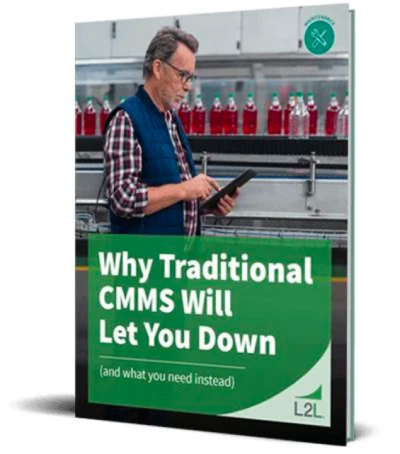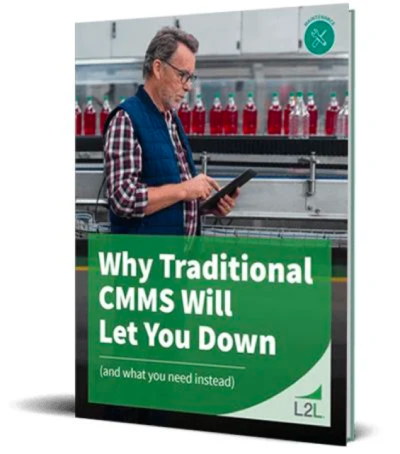
The Perfect
MES System Guide

Ready to Get Started? Request a Free Consultation.
MES stands for manufacturing execution system. It’s software that brings together lean transformation, shop floor automation, machine connectivity, and more. These help manufacturers track, control, and document the production process from raw materials to finished goods. The ability to manage these processes can greatly improve operational performance on the plant floor. Think of it as a real-time cockpit that builds an "as-built" record of every part you run. This way, teams always know exactly what’s happening and why.
For most manufacturers, the MES journey has lasted over 20 years. Many companies started with big ideas for MES, believing that it was going to give their plants more automation and visibility. To codify these ideas, the Manufacturing Enterprise Solutions Association (MESA) attempted to define MES by listing 11 functions of an MES. In 2000, it merged with the Purdue Reference Model to form the ANSI/ISA-95 standard.
The model spans many functions. However, this is perhaps where MES is set up to fail. While MES can help improve OEE, it is not the "silver bullet" that was promised from the start.
Fortunately, there may be a simpler approach to getting most MES benefits without the cost and complexity of a full MES.
At a high level, MES benefits deliver on four core elements:
-
Product traceability ("Track and Trace")
-
Recipe management
-
Machine process control
- Downtime management and OEE improvement
You can also expect the occasional benefit from MES in these areas:
-
Labor management
-
Regulatory compliance
-
Supply chain visibility
-
Logistics scheduling and planning
There are many different kinds of software and systems that integrate with a manufacturing execution system. Some are comparable but not synonymous with MES. These include:
-
Enterprise Resource Planning (ERP)
-
Manufacturing Resource Planning/Material Resource Planning (MRP)
-
Enterprise Asset Management (EAM)
-
Statistical Process Control (SPC)
MES capabilities can be very valuable, especially if you’re in a highly regulated industry where production process errors can be catastrophic.
Many companies don't have machines with programmable logic controllers (PLCs). They use paper to manage recipes, tracing, and other shop floor processes. If any of this sounds familiar, you’ve got a lot of work to do before MES software can create real benefits. You want to evolve your manufacturing operation into a digital factory. But you don't want to spend years and millions of dollars on a complex MES.
Unfortunately, integration is also no easy task. The complexity of PLC programming has set a very high threshold that many manufacturers haven’t overcome. Time and money constraints have made it next to impossible.
MES focuses solely on the equipment. It assumes that all manufacturing execution problems can be solved through sensors and PLC software. While these technologies play a role, they only account for a portion of the operational availability (OA) gap in manufacturing. You need to incorporate other critical abnormality management elements, such as:
-
Material issues: A glaring gap in MES is the ability to track material issues (ordering, material shortages, and inventory management) in your production process.
-
Training issues: Unlike a cloud-based system, MES systems can’t track employee skills training and certifications.
-
Quality problems: MES software can help manage production, but it can't track and monitor quality assurance.
-
Audits: Unlike a complete manufacturing system, MES does not track records or critical information for audits.
-
Total Productive Maintenance: TPM goes untracked by MES because the software can’t monitor your entire maintenance system.
-
Additional areas: 5S, product changeovers, trial management, product verification runs, and cleaning procedures get neglected by MES systems.
In theory, an MES platform defines capabilities for managing every element of the shop floor. Unfortunately, it's fallen short.
We've been told that MES can do it all. With enough time and money, it probably could. Of course, we've never come across a plant with unlimited resources.
Due to global competition, manufacturers have been forced to narrow the MES scope. This is mainly because most implementations take years and cost millions of dollars. In cases where companies commit to an MES, they typically only have portions implemented on the machine side. Unfortunately, the scope has been narrowed so much that they resort to manual methods for many execution processes.
If you’re still thinking about purchasing MES software, review these points first:
-
Today, technologies that take 2–3 years to implement can become outdated before the project is even finished.
-
Mergers and acquisitions can leave companies with multiple MES systems that present challenges like siloed or inconsistent data.
-
Many manufacturers are fed up with the seemingly never-ending journey toward digital transformation with little or no ROI.
Part of the complexity is often because many manufacturers have a growing list of stock-keeping units (SKUs). At the same time, the number of IT staff continues to dwindle. This creates a conflict between the ongoing support of MES and competing IT projects. We’re not saying implementing MES can’t or shouldn't be done. However, you should know what it will accomplish and what it won’t.
The PLC Problem
In a nutshell, traditional MES tracking pinpoints machine data. The problem is that it ignores the people, materials, and methods that actually make or break shifts.
Historically, people who monitored shop floor processes and performed visual inspections also operated machinery. They identified the manual adjustments necessary to restore control in uncontrolled situations.
At the time, employees would perform the same jobs for their entire careers. Today, workers and jobs change with much greater frequency. This makes it hard to maintain consistency in productivity and scrap control.
As manufacturing processes become more automated and sophisticated, it’s critical to remove variance and to mistake-proof processes. The goal is to increase productivity, reduce scrap, and minimize wasteful overproduction. Optimization requires automatically adjusting for variations in product attributes and machine parameters, such as:
-
Dimension
-
Weight
-
Verification/inspection data
-
Machine settings
By building this functionality into the process, you create a standard to measure against. This helps you identify when the process has drifted out of normal operating conditions. In turn, this allows you to notify the operator that a problem has occurred.
Of course, many companies aren't in this boat. Some don’t have machines with PLCs, or they primarily use hand tools for assembly. Others may have these things but use paper for recipe management and process traceability. These manufacturers don’t want to spend years and millions of dollars on a complex MES. But they still want to evolve into a digital factory.
Lack of Standardized Approach
An MES platform comes up short by only identifying and surfacing problems. What you need is a standardized approach that allows you to focus on systemic issues and resolve problems.
Often, there is no system in place to manage the follow-up and corrective actions. Therefore, the ball is often dropped, and companies struggle to close the loop on common plant problems. This puts an additional burden on your key resources, who constantly fight recurring plant floor issues.
Real-world example: Cars are getting more sophisticated every day, but they need operators. A car's computer can tell you that the air in your tires is low, but it can't alert you to uneven wear. Often, using sensors to capture everything is just not cost-effective. Trying to eliminate the driver from the equation at this point is all but impossible.
Minimal Impact on Problem-Solving
It’s important to know what your problems are. Many companies struggle with common problems like:
-
Raw material supply and deviation in quality
-
Poor visibility
-
Low expectations
There can be up to 200 processes and subprocesses in manufacturing, many of which are managed with manual methods such as paper, radios, and Post-it notes.
Smart processes and nimble software can close the gaps MES leaves behind without blowing up your budget. Maybe you need a full-blown MES system to make that happen, and maybe you don’t.
Either way, the good news is you have options. Manufacturing is really about creating an efficient, consistent, and repeatable process.
Successful companies can bridge a significant portion of that OA gap by focusing on abnormality management. “Abnormalities” are disruptions. MES system alternatives like connected manufacturing operations platforms are about eliminating these disruptions.
MES vs. Manufacturing Operations Platforms
There are four main aspects of the business that manufacturers have to deal with on the floor every day: man, materials, machine, and methods.
-
Man is the people, both the people who build the product and those who support them.
-
Materials are the components to make the product. Like it or not, your competitor is probably also buying from the same suppliers and paying the same prices you are.
-
Methods are how you manage the processes or workflows in the facility. This is where you gain a competitive edge: through the methods you choose to deploy or manage these four main aspects.
-
Machine is the fourth element. Of course, your competitors probably buy their machines from the same vendor at close to the same cost.
A connected manufacturing operations platform brings all these elements together in ways that make sense. That means man, materials, methods, and machines are all on the same page and connected on the same platform. This is something MES software doesn't accomplish on its own.
When to Focus on an MES Solution
To achieve your objectives, you may still find it necessary to implement an MES solution. A wide array of companies is available to provide this service, but you may choose to build it yourself. It’s essential to be clear about what you can achieve with an MES.
A good MES solution controls equipment settings or parameters like fill rate and speed. You also need to include the material control aspect of MES. This involves the components to build the product and the traceability of their lot or serial numbers.
Once you’ve included all that, you’ll likely realize it's costly and time-consuming to build an MES system. This is especially true if you want it to control the whole plant. But sometimes, MES is required by your customers and needed for the traceability of the product.
When a Manufacturing Operations Platform Is What You Need: Real-Time Data
An MES is designed to notify you of problems related to machines. In fact, our research has shown that machine-related issues cause 68% of unplanned downtime.
However, breakdown prevention lies beyond MES systems. For many manufacturers, deploying a connected manufacturing operations platform first is the smartest move.
Manufacturing operations platforms enable production process improvements by standardizing issue responses. Additionally, this software provides a continuous improvement foundation on which the MES can sit. Better yet, connected work extends MES capabilities for driving improvement. For example:
-
MES data and metrics can trigger processes outside of a machine.
-
Machine notifications contain a trackable and required action to close the loop on issue resolution.
-
A data interface serves operators where no MES data is available.
-
Processes can launch across any part of the plant through the LES based on MES data.
The terms MES and MOM are often used interchangeably. While they’re similar concepts, they are not identical.
MOM stands for Manufacturing Operations Management. It's defined as a collection of systems for managing end-to-end manufacturing processes with the goal of optimizing efficiency. MOM encompasses scheduling, dispatching, maintenance, skills management, and MES functions. In contrast, MES software is simply one part of the solution. It's rarely the all-encompassing software needed in your facility.
In simple terms: MES + connected manufacturing operations platform = Lean MOM.
Combined, they offer a comprehensive solution for:
-
Machine issues related to track and trace, recipe management, process control, and more
-
All of the human responses to abnormalities happening every day on the plant floor
The good news is that while you have problems every day that need to be solved, you also have the people to help solve those problems. Problems are also opportunities, and opportunities are where you become more efficient.
The sooner you identify problems and find solutions, the more time and resources you save.
That’s where L2L’s Connected Manufacturing Operations Platform comes in.
Simply put, this platform combines three things:
-
MES functionality
-
CMMS/EAM functionality
-
Connected workforce philosophy and technology
It’s a pragmatic approach to digital transformation, and one that makes you more efficient at a faster rate. Plus, it’s more budget-friendly than traditional approaches, especially traditional MES.
Here are just a few things it can do:
-
Identify the issues and roadblocks on the shop floor
-
Understand each problem you're facing
-
Prioritize those problems and opportunities using data instead of emotions
-
Put actions in place to solve the problem and manage the actions built around them
-
Measure the actions (review data) to ensure the problem has been solved (follow-up)
-
Share those lessons learned across departments and sites to eliminate the possibility of repeat issues
Manufacturers are always looking to increase productivity. You can achieve this objective by consistently identifying and solving costly problems. This requires managing the methods and people, building a continuous improvement culture. A manufacturing operations platform makes it possible with a fraction of the time commitment and resources it takes to deploy and manage an MES implementation.
With an off-the-shelf connected platform like L2L, agility is becoming a cost-effective alternative. Unlike an MES, L2L can be deployed and run in your plant in as little as 4-6 weeks.
In the market for a manufacturing execution system? Download our FREE MES Buyer's Kit to learn what you do—and don't—need for your operations.

Change Your Culture
“We wanted to make information transparent at every level, and make everyone a problem solver. It’s how we’re going to operate all of our plants to a single standard going forward.”

